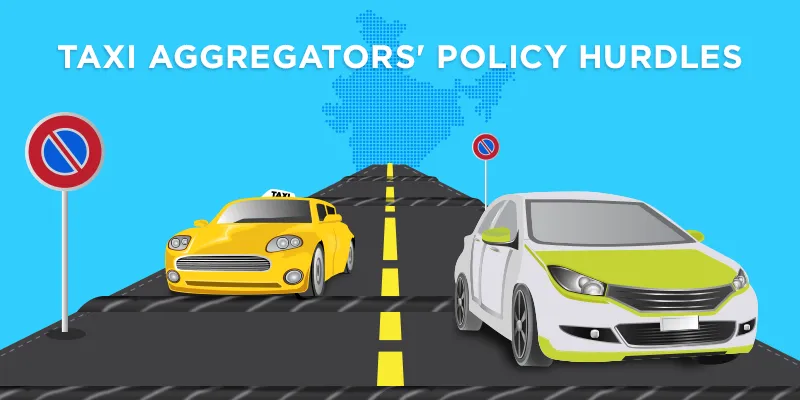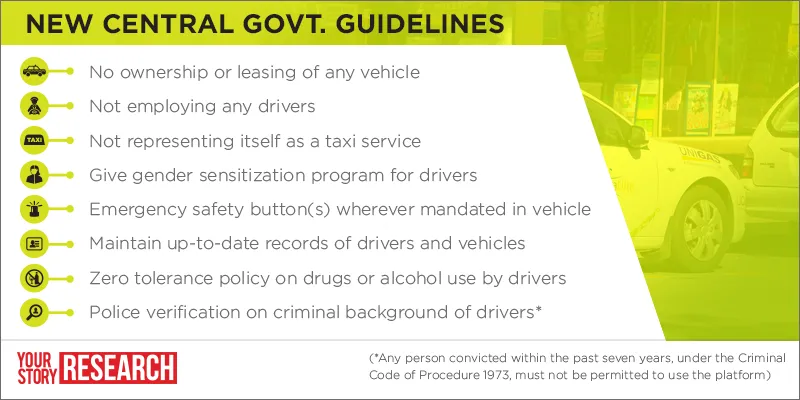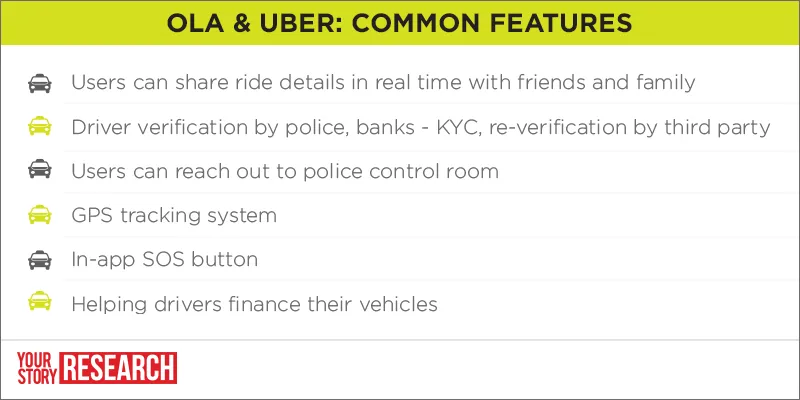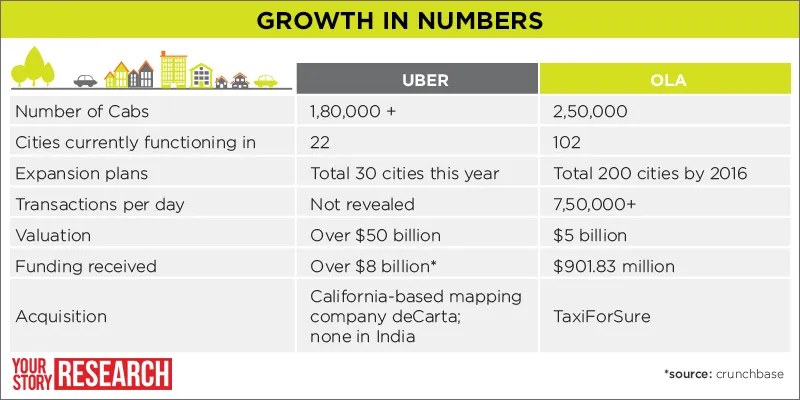New govt. guidelines bring relief to Ola and Uber, but concerns remain

The Central Government’s new guidelines on online taxi aggregators have come as a relief to firms like Ola and Uber. However, as pointed out in a YourStory’s article, States are authorised to come up with their own policies that could be contrary to these guidelines and that could complicate matters for these taxi platforms. While Ola and Uber are already taking steps to comply with some of the new guidelines, concerns remain.
Earlier this month, the Union Ministry of Road Transport and Highways (MoRT&H) issued an ‘Advisory for Licensing, Compliance and Liability of On-demand Information Technology based Transportation platforms’. While there are numerous points in the document, which YourStory has seen, for the companies concerned the biggest boost is that there is finally a distinction between technology-based aggregators and taxi companies. Both Ola and Uber have repeatedly stated that they are primarily mobile technology platforms connecting customers to book taxis and, in the case of Ola, autos.
Both have now said that they are willing to take license when and where needed in India.
In its official statement, Ola welcomed the advisory from the Ministry. “We will continue to work with the government, under the aegis of this progressive directive, offering our complete support and commitment towards building mobility for a billion people," the statement said.
Amit Jain, President, Uber India, said, “The guidelines are a significant step in the right direction. They rightfully distinguish between taxi operators and technology platforms, and lay down sector specific regulations for our industry.”

Worried about State policies
Both Ola and Uber told YourStory that they are happy to cooperate with the government, both at the centre and the state. “It is our commitment to work with the state and centre by working with them to create an ecosystem that can usher in growth, entrepreneurship, and social well-being for all stakeholders,” said Anand Subramanian, Senior Director, Marketing Communications at Ola. He told YourStory that Ola is open to taking a license.
However, executives at both the aggregators that YourStory spoke to had concerns regarding many of the policies that state transport authorities have spoken about. These executives spoke to YourStory on condition of anonymity as they are not authorised to speak on the topic.

The CNG conundrum in Delhi
One such issue is the requirement to use CNG in all taxis operating in the national Capital. In the last few months, Ola has changed its entire fleet to CNG cabs. In fact, Ola’s technology distinguishes vehicles on its platform on the basis of fuel, said Anand. All rides requested for within Delhi will be serviced using CNG vehicles only. Users have a choice on the app between vehicles to be used within Delhi and Delhi to NCR [the latter has CNG and diesel cabs]. Additionally, Ola has partnered with financiers, car manufacturers, and CNG distributors like India Oil Corporation to help drivers switch to CNG cars in Delhi.
However, an executive at Ola said this could become a problem if other states also make CNG mandatory. Availability of CNG vehicles as well as the required infrastructure is an issue in many states. For instance, Bengaluru currently has no CNG stations.
A Delhi High Court order earlier this month had given time till March 1 of 2016 for taxis to convert to CNG cars. Uber has said that they are now legal in Delhi under court orders. “We have to file an affidavit in court within two weeks outlining our plans for being complying with the CNG stipulation by March 1st. Our rights to argue the point that diesel is also permitted within Delhi are not affected – the court will hear us on merits at the final hearing stage,” said Uber’s spokesperson.
Peak time charges
The Kerala Transport Department had earlier told YourStory that they plan to raise the minimum charges and do away with peak time charges. However, the counter argument put up by an executive at Ola is that tourist taxi fares are not notified by the State, but by the Centre. The Ola cabs plying in Kerala have tourist taxi license, (since Thiruvananthapuram or Kochi has no city taxi scheme).
In Karnataka, the Transport Department has plans to cancel the driver’s license in instances of over pricing. Again the executive argues that it is not a radio taxi or tourist taxi license, but a carriage permit which allows you to negotiate the fare with the user. “Basic economics of pricing says that fares have to be a function of demand and supply. Even if it is going to be a fixed price, logically speaking, fares have to increase over time,” said the executive.

Kaali-peelis hurt
It is not just the policy issues that are haunting these companies. The basic difference between a normal taxi and one which associates with Ola and Uber is that you can hire them only through an app, you can’t hail it from the street. Also, they are not given the privileges like a taxi stand, or a designated parking area. Uber has only commercially licensed privately owned vehicles, Karun Arya, Communications Lead, South Asia and India, at Uber, reiterates. “The contract is such that Uber helps these commercial cars book rides through the app for a commission,” he said.
But the entry of such revolutionary ideas, however, has hurt local taxi drivers. “Uber and Ola provide their service for cheaper rates—at Rs 8-10 per km—in order to enlarge their cutomer base. They are funded by huge corporates, but we can’t afford such cheap rates, we go by the mandated Rs 12-14 per km,” said K K Tiwari, President, Swabhiman Taxi-Rickshaw Union, Mumbai. The union, along with Mumbai Taximen’s Association, is planning their own app. “But we can’t compete [with Ola and Uber] since they have crores of funding,” Tiwari added. According to him, most taxi drivers in the union are now moving to these platforms as they are not getting any ride otherwise.
The central government guidelines clarify that the drivers “must not be prevented from registering themselves or the vehicles they operate on multiple on-demand transportation technology platforms unless the owners of the vehicle choose otherwise.” Many drivers are already doing this and attach themselves to either of these operators multiple times during the day, depending on bookings.
YourStory take
The State transport authorities should come out with their policies regarding aggregators soon. Uncertainty is not good for business, neither is it good for the drivers on these platforms and consumers. Once the policies are out, there will be clarity on one of the important areas of contention between authorities and the platforms—surge or peak pricing. If the authorities rule that the peak charges will be done away with, Ola and Uber will have a problem as such pricing helps them get more drivers on the road during peak hours and also earn more money. But the main question really is how long will these companies, competing fiercely for market share, be able to keep subsidising rides for consumers as both continue to pay a fixed slab to drivers along with incentives? How many customers will continue to use these services when there is no more ‘subsidising’.







